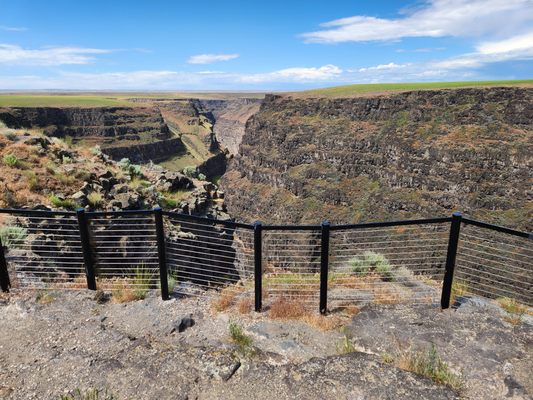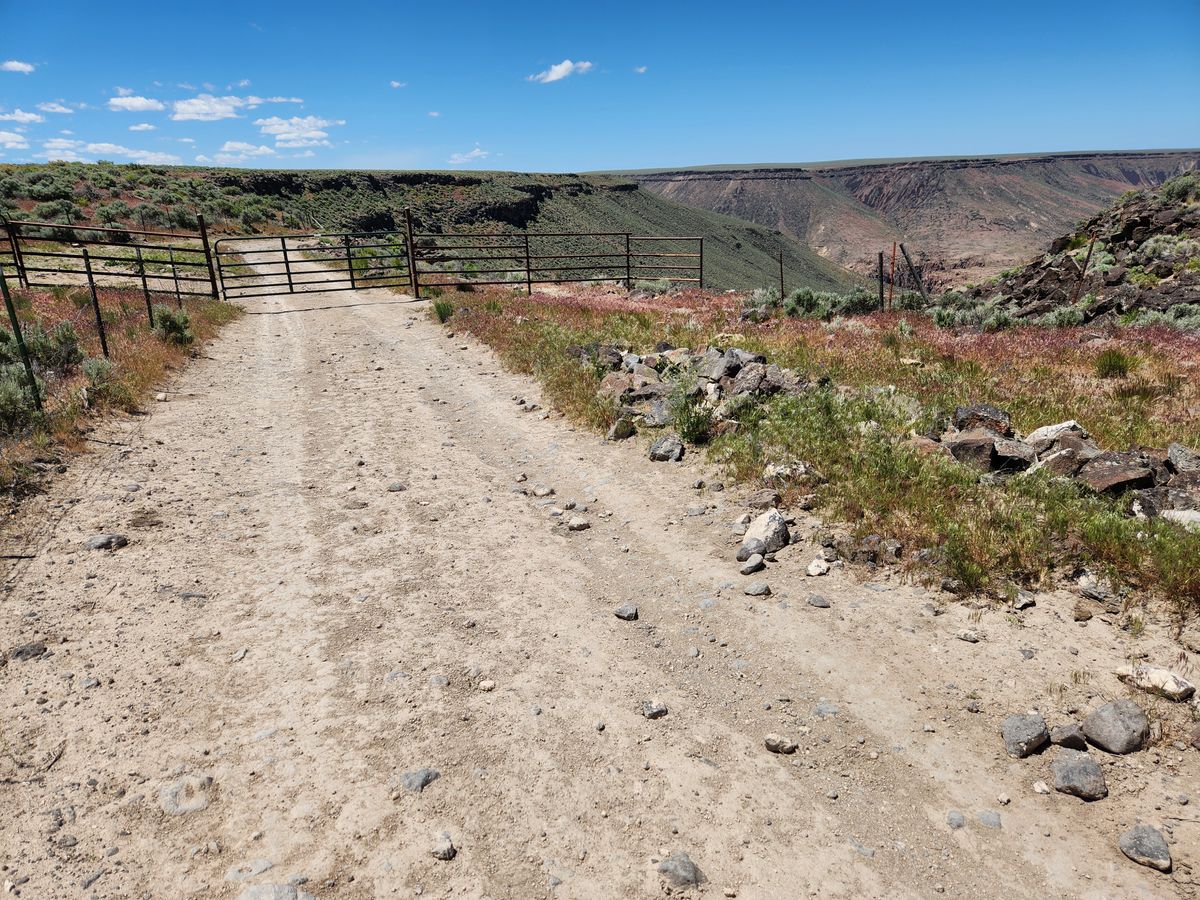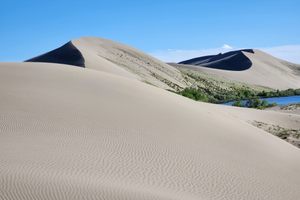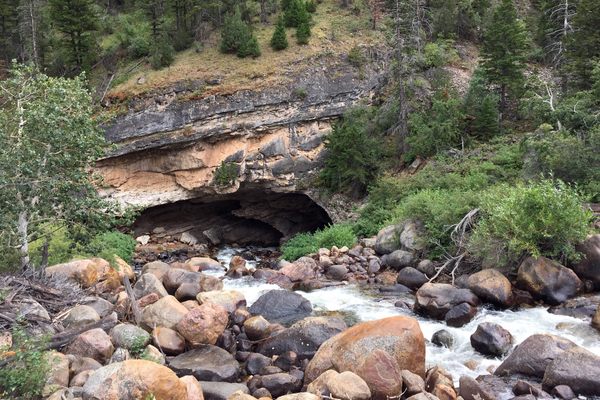About
The Bruneau River rises in the Jarbidge Mountains of extreme northern Nevada and flows north into Idaho, meeting the Snake River near the present site of the C. J. Strike Dam. Along the way, it is joined by the Jarbidge River as well as by several smaller tributaries.
On its way to the Snake, the Bruneau crosses the gently rolling Snake River Plain. However, the Snake River itself has eroded into the plain, such that the river level is now well below the original surface. In response, the Bruneau and its tributaries have carved channels down to the present level of the Snake. This has resulted in spectacular canyons, nearly 1,000 feet deep in places and often hardly wider than their depth. The canyon system extends over 50 miles, and much of the canyons, including the tributaries, have been designated as the Bruneau-Jarbidge Wilderness Area. The wilderness area encompasses the confluence with the Jarbidge River and typically encloses the canyons with a buffer zone a half-mile or so wide. Even where such a buffer doesn't exist, the canyon below the rim is usually designated wilderness.
The country is so remote and access is so difficult, that the canyons remain little known outside the area. Even the most accessible canyon overlook, on the east side of the Bruneau River where the canyon is over 800 feet deep, is not reachable by a paved road, and other viewpoints require high clearance at a minimum and often 4-wheel-drive.
Bruneau Crossing (also called Indian Hot Spring Road) is an example. This is a Jeep road that lies in the middle of the wilderness area, crossing the Bruneau just north of the confluence of the Bruneau and Jarbidge Rivers. Indian Hot Spring, along with some ruins, are in the bottom of the canyon on the west side of the Bruneau. The road is a designated motorized access road through the wilderness (a so-called "cherrystem road"), but within the canyon itself much of it is an extreme shelf road that requires both experienced drivers and adequate vehicles. A new bridge was built across the Bruneau in the last few years, a cooperative project between the Bureau of Land Management and local ranchers, and it makes an incongruous contrast with the extreme Jeep trails it serves. This crossing is also a popular put-in point for river trips down the Bruneau, during the short running season around May at the height of the spring runoff.
Related Tags
Know Before You Go
Other canyon viewpoints can be accessed with an adequate vehicle. Unusually, the Triguero homestead trailhead (at 42.186027 N, 115.695375 W), west of the Bruneau and south of the wilderness area, can be reached just by a high-clearance vehicle. Most viewpoints will require 4wd, however.
As noted, there is only one viewpoint on a graded road. This site even features guardrails and a vault toilet. To reach it, go to the village of Bruneau on Idaho State Route 51 and turn south on Hot Springs Road. This intersection is well marked. Follow the Hot Springs Road about 15.5 miles to a well-marked turnoff (at 42.70992 N, 115.62185 W) on the right for the "Bruneau Canyon Overlook." Turn here and follow the graded road another three miles.
The road is paved for about 12 miles from Bruneau, while the rest is graded, including the spur road to the overlook. Passenger cars in dry weather should have no trouble.
The turnoff for Bruneau Crossing, at 42.43893 N, 115.38178 W, is 29 miles farther down this road (which has now become the Clover-Three Creek Road). The turnoff is marked for the Bruneau River. The first 4 miles are graded, but after that it becomes extremely rough, with high clearance mandatory. The point where you turn onto the rough road (at about 42.41860 N, 115.44266 W) is well marked. The road remains rough all the way to the wilderness boundary, marked as "Bruneau Cherrystem," at about 42.34239 N, 115.60412 W. You can proceed another mile or so on the cherrystem road to the beginning of the extreme shelf road into the canyon proper (at about 42.33167 N, 115.62216 W). Continuing down to the river, however, will require 4wd, an adequate vehicle (not too wide, preferably short-coupled, and with especially high clearance), as well as experience in negotiating extreme 4wd trails.
As mentioned, other overlooks and access points to Bruneau Canyon exist, but will be off primitive roads that will require high clearance and usually 4wd. As would be expected, the canyons themselves are major barriers to travel, with few crossings.
Consult maps to find potential access points; the USGS 7.5' topographic quadrangles will probably be the most useful. (Note that the USGS has put all its topographic maps online as PDF files, so they can be downloaded and put onto an e-reader or tablet. You do not need to buy paper maps.) A GPS will also be helpful. Remember that motorized travel into what is now the wilderness area is prohibited except along designated motorized corridors ("cherrystem roads"), and some of the quadrangles are too old to show the current wilderness boundaries. Of course, such old Jeep roads work fine as hiking trails, too.
When attempting these routes be sure your vehicle is fully fueled with a spare tire. Bringing adequate water is important particularly in the warm months. If you plan to use water from the Bruneau or tributary streams, be sure to treat it. Cattle are still actively run in the area and the water will be contaminated with cow excrement.
Community Contributors
Added By
Published
July 23, 2024

































































































